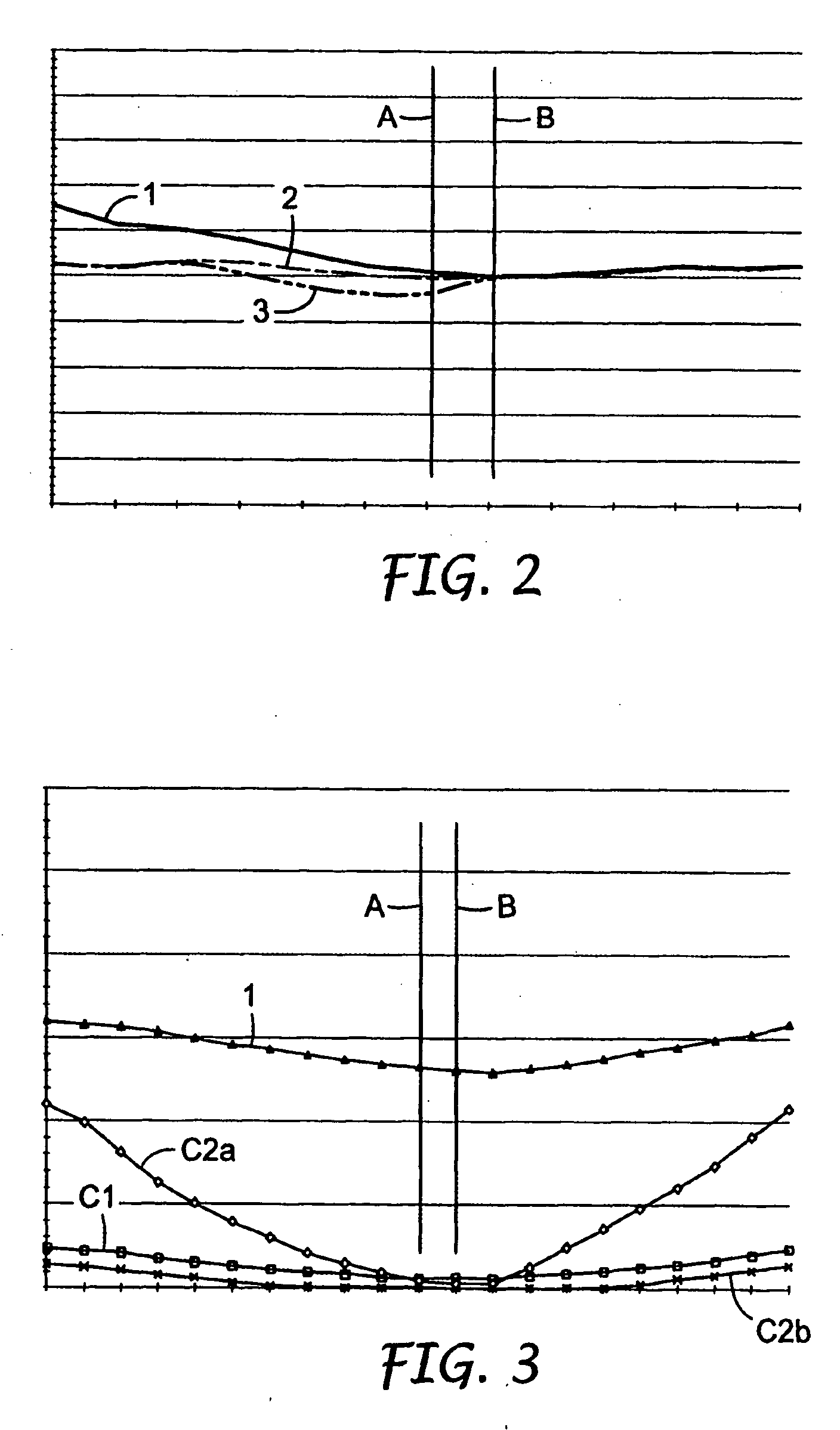Mat for mounting a pollution control element in a pollution control device for the treatment of exhaust gas
a technology of pollution control device and pollution control element, which is applied in the direction of machines/engines, lighting and heating apparatus, separation processes, etc., can solve the problems of high cost of polycrystalline fibers, increased gap between the inside peripheral wall of the housing and the outer wall of the monolith, and increased fragility of the ceramic pollution control monolith
- Summary
- Abstract
- Description
- Claims
- Application Information
AI Technical Summary
Benefits of technology
Problems solved by technology
Method used
Image
Examples
example 1
[0071] 40 liters of S-2 glass fibers of approximately 9 μm in average diameter and 2.54 cm in length were obtained from Advanced Glassfiber Yarns LLC (AGY). The fibers were essentially shot free.
[0072] The glass fibers were opened in a two-zone Laroche opener. The first zone had a feed speed of 2 m / min and a Lickerin roll speed of 2,500 rev / min. The second zone had a feed speed of 4 m / min and a Lickerin roll speed of 2,500 rev / min. The output speed was 6.5 m / min.
[0073] The opened fibers were then fed into a conventional web-forming machine (commercially available under the trade designation “Rando Webber” from Rando Machine Corp. of Macedon, N.Y., wherein the fibers were blown onto a porous metal roll to form a continuous web. The continuous web was then needle-bonded on a conventional needle tacker. The needle speed was 100 cycles / min and the output speed was 1.1 m / min. The “weight per area” of the mounting mat could be adjusted as desired. In tests where the value of “weight per...
example 2
[0076] Example 2 was prepared by the method described in Example 1 with the exception that E-glass fibers (chopped glass strands, diameter 9 μm, chopped to a length of 1 inch (25.4 mm) available from Advanced Glassfiber Yarns LLC (AGY), Aiken, S.C., USA) were employed. The composition of the mat of Example 2 is summarized in Table 1.
[0077] Tests on the mat of Example 2 include the Cyclical Compression Test. Results are summarized in Table 3 and show that at diesel pollution control device temperatures (i.e., average mat temperature of 250° C.), the mat keeps 86.3% of its original pressure after 1000 compression cycles.
[0078] Example 2 was also tested in the RCFT using the same conditions as used in Example 1. Example 2 maintained adequate holding force over the entire temperature range.
example 3
[0079] R-glass fibers (60% SiO2, 25% Al2O3, 9% CaO, and 6% MgO) having a diameter of ca. 10 μm, chopped to a length of 36 mm, obtained from Saint-Gobain Vetrotex, were processed into a web by the method described in Example 1. The composition of the mat of Example 4 is summarized in Table 1.
[0080] Tests on the R-glass mat of Example 3 include the Cyclical Compression Test. Results are summarized in Table 3 below and show that at diesel pollution control device temperatures (i.e., average mat temperature of 250° C.), the mat keeps 95.5% of its original pressure after 1000 compression cycles.
[0081] Additionally, an RCFT test was performed on the mat of Example 3 in the same way as for the mat of Example 1 except that the simulated temperature range for the monolith was from 25° C. to 500° C. and 25 to 200° C. for the skin. Example 3 maintained adequate holding force over the entire temperature range.
PUM
| Property | Measurement | Unit |
|---|---|---|
| density | aaaaa | aaaaa |
| density | aaaaa | aaaaa |
| length | aaaaa | aaaaa |
Abstract
Description
Claims
Application Information
 Login to View More
Login to View More - R&D
- Intellectual Property
- Life Sciences
- Materials
- Tech Scout
- Unparalleled Data Quality
- Higher Quality Content
- 60% Fewer Hallucinations
Browse by: Latest US Patents, China's latest patents, Technical Efficacy Thesaurus, Application Domain, Technology Topic, Popular Technical Reports.
© 2025 PatSnap. All rights reserved.Legal|Privacy policy|Modern Slavery Act Transparency Statement|Sitemap|About US| Contact US: help@patsnap.com


